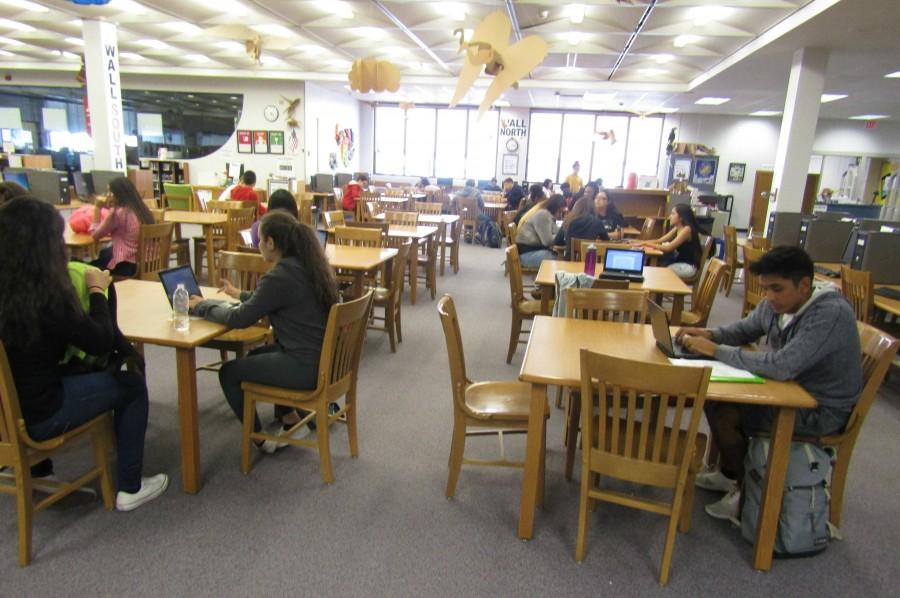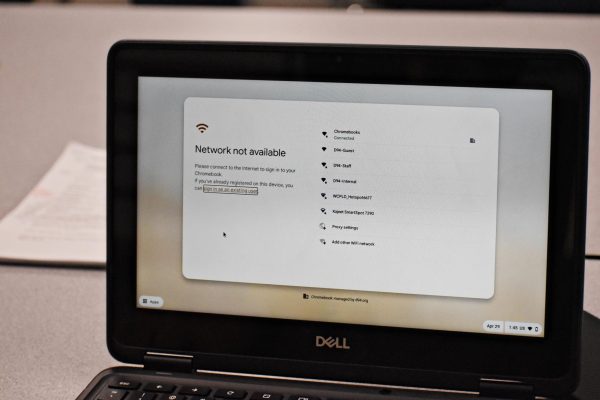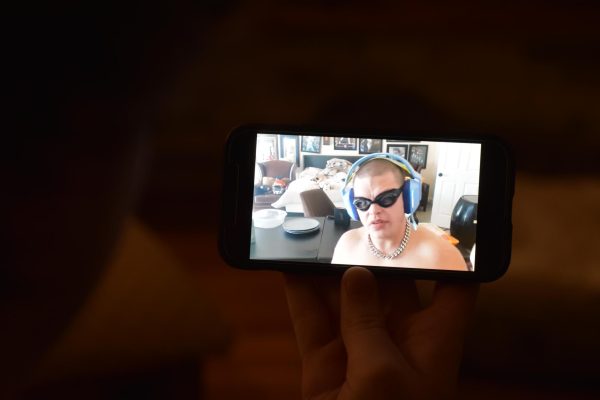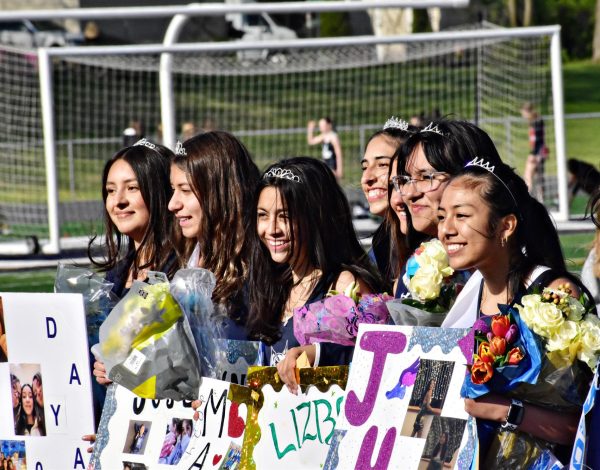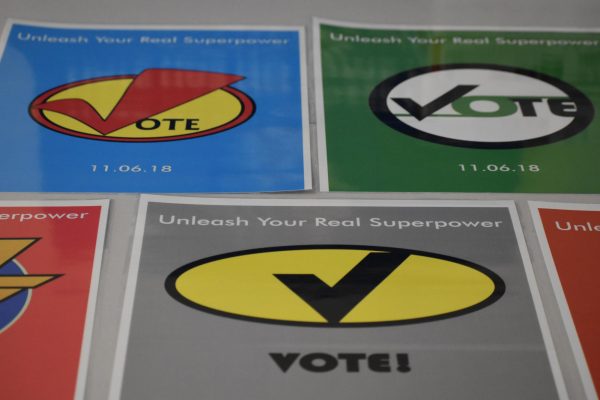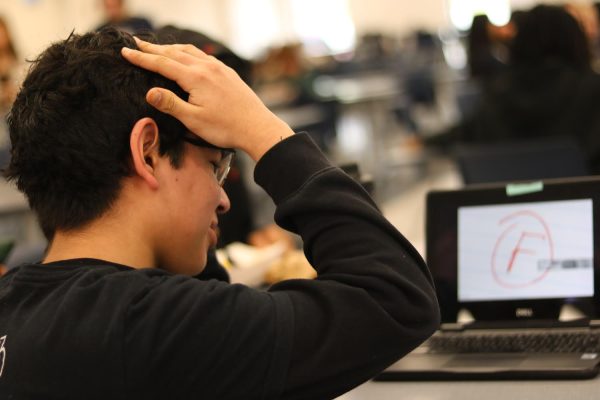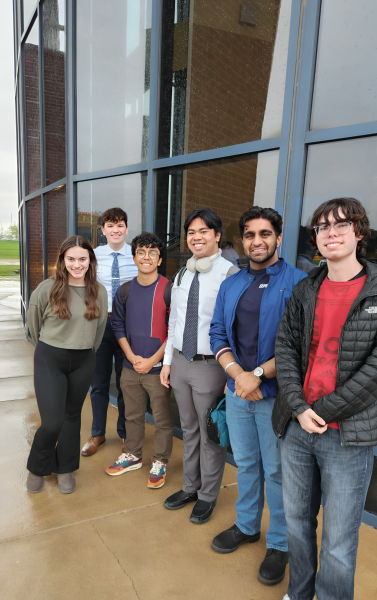Snow days may take on new meaning with the potential of e-learning
Photo by Kyle Paup
To accommodate students in preparation of e-learning, the LRC and commons are open for two hours after school as a resource for Internet connection.
October 2, 2015
Students will learn by late November if West Chicago will pilot the e-learning program which will use technology to allow instruction days outside of the school building.
The state superintendent will make this decision Nov. 29.
“E-learning is a remote educational opportunity. A lot of colleges engage in e-learning type instruction, teaching, and learning. But it really is utilizing a one-to-one device like our Chromebooks, and using some type of learning management system,” Superintendent Doug Domeracki said.
While colleges use various other sources, the school is using Google.
“We’re utilizing Google as our learning management system but it’s really a mechanism by which teachers can instruct and students can learn. It’s somewhat of a placeholder for education and documentation,” Domeracki said.
Many teachers and students already use the Chromebooks with homework and projects to help communicate outside of the classroom after school hours. E-learning uses this and takes it to another level.
“Now let’s ask ourselves, if we’ve got the capacity to do that, then what opportunities do we have to extend ourselves a little bit further and create these learning opportunities on days when school is not in session?” Domeracki said.
E-learning is the answer to this question.
“What e-learning really does is it allows schools to engage in education once students are not on the campus. So, if a teacher wanted to have some type of e-learning extension program or opportunities outside of the traditional school building, they can do that,” Domeracki said.
The concept of e-learning can then be applied to emergency days such as snow days.
“Most of the time you get a pretty good sense that snow is coming,” Domeracki said. “When we know that those kind of predictions are out there, we can inform students through any number of mechanisms, but typically through a PA announcement in the building.”
Once this happens, students will know in advance that they must have their Chromebook at home in the event of an e-learning day.
A benefit of this is being able to accurately determine last day of school.
“Right now one of the real difficult things for teachers, students, parents, and the community is the question ‘what’s the last day of school?’ It’s a day that affects everybody,” Domeracki said. “If we can take this concept of e-learning, extend that to an emergency day, and say that we’re going to try to do teaching and learning on those kind of days, we can solidify up that last day of school.”
While this eliminates some emergency days, it may not be the case for all.
“There very well may be days (where) we can not provide that notification, and if we run into days like that then we’ll just take a traditional snow day. We don’t lose out on the snow days,” Domeracki said.
However, e-learning offers much more to the advancement of the school than just minimizing the number of snow days in the year.
“A lot of people attach e-learning directly to snow days, but I think e-learning gets to snow days a couple of steps down the road, Domeracki said. “What e-learning really does is it helps contribute to capacity building for students, teachers, and ultimately, for the school.”
According to Domeracki, an important question now that every student is loaned a Chromebook is ‘where do we go from here?’ Through capacity building, the school is able to engage students in more opportunities by taking what is already here and making more improvements as the process moves along.
The move to initiate e-learning goes beyond the school district.
“In addition to proposing it to the board, it was also written up as legislation and proposed to some legislatures to see if they could move it forward as a bill,” Domeracki said.
State legislature and the Illinois School Code determine how many days school must be in session as opposed to the school board.
“So in order to be able to utilize e-learning in (event) of a snow day, this had to go through the legislative process and go from just being a local action to a state law. I was fortunate enough to share this initiative with a number of people to testify in Springfield, and now it’s a law in the state of Illinois,” Domeracki said. “However it is a big deal, in terms of how education is delivered. It’s such a big deal that the state is walking gently down this path.”
Not every school has the technological capability to commit to the e-learning program, so to keep the system flowing without issue, there will be pilot schools to test e-learning. It is not yet open to everybody.
Schools interested in being a pilot school must fill out an application by Oct. 15, as West Chicago is currently doing. Forty five days after the deadline, the state superintendent will chose three schools to pilot the program.
“If we are not selected we will not be eligible to be an e-learning site, but that doesn’t mean that we won’t continue. If a snow day comes we’ll have to take a snow day. But if what that e-learning capstone is about the capacity learning about the organization, we will still be working through our system and providing the supports so that we can maximize our capacity. We just won’t be able to utilize it as an e-learning school,” Domeracki said.
With or without e-learning, there are several ways for students currently without Internet at their homes to gain access to the Internet in anticipation of becoming an e-learning school.
“Last year as we were going down this path, I surveyed the entire student body, and asked if we were to open up the cafeteria and give you access, what would be the two hour slot that would work best for you? About 68 percent of the kids said that basically right after school for two hours,” Domeracki said.
This became available for students on Sept. 29.
“It will be like an Internet cafe down there. Quest Food Service will have the snack bar open after school for two hours, the library will be available, it will be supervised, so there will be people there. It will be an opportunity for people to get online,” Domeracki said.
Other steps have been taken to allow Internet access at various businesses in the area.
“If you go on our website right now you’ll see under the one-to-one tab, the list of all the places that have open Internet access within our school community, the communities which we serve,” Domeracki said.
The option that relates mostly to the e-learning program is the ability to rent hotspots from the library.
“I was able to secure 100 hotspots as well as the Internet service at no additional cost to the district, to now provide students with Internet access at home on those days that we would have e-learning days,” Domeracki said.
However, hotspots only allow a limited amount of data to be downloaded. The data control ability is monitored by the school.



